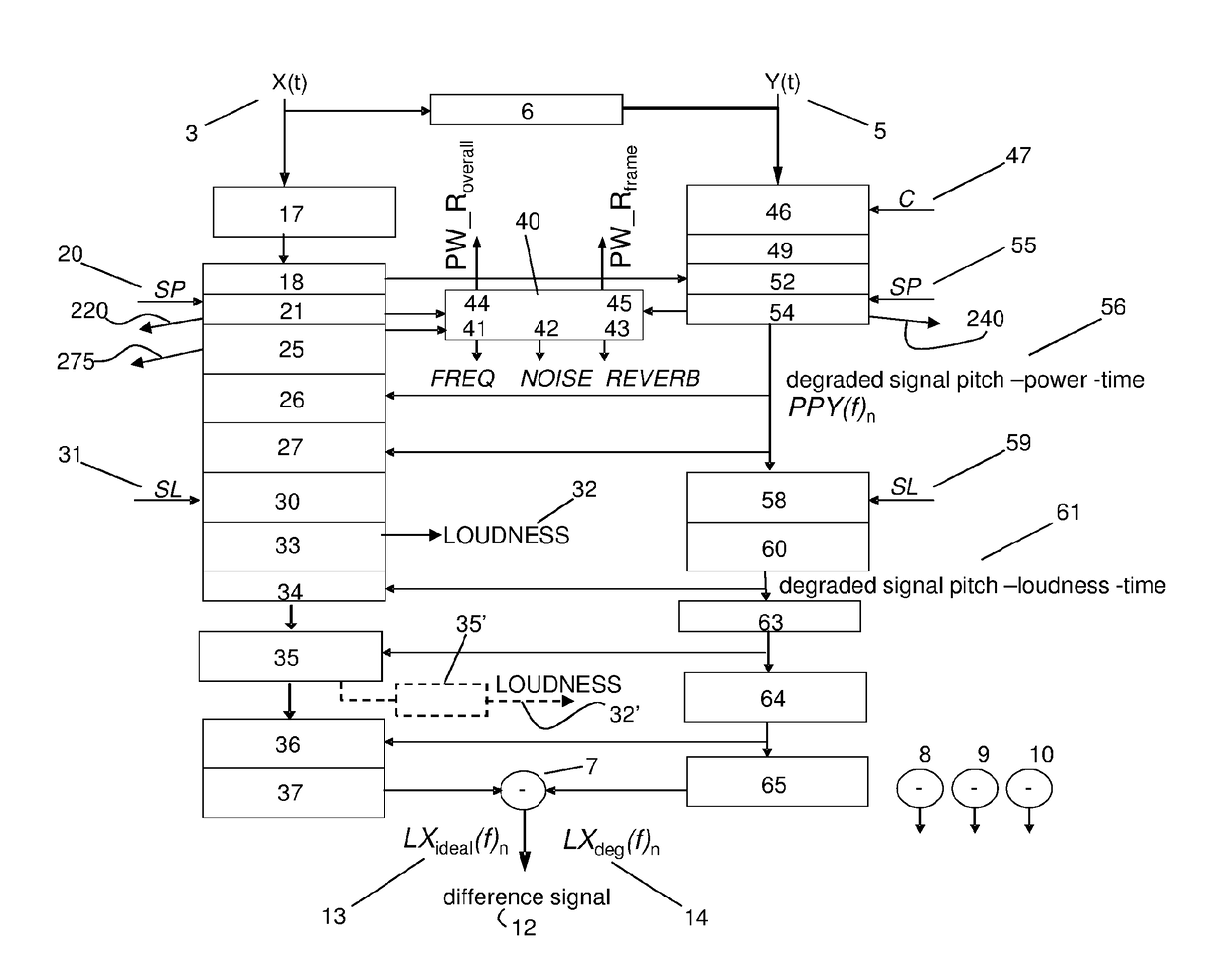Method of and Apparatus for Evaluating Quality of a Degraded Speech Signal
a speech signal and quality technology, applied in the field of evaluating the quality of degraded speech signals, can solve the problems of incorrect prediction of the impact of some types of distortion, the impact of noise in so called empty speech bands, and the incorrect prediction of the impact of noise on the perceived speech quality of speech analysis
- Summary
- Abstract
- Description
- Claims
- Application Information
AI Technical Summary
Benefits of technology
Problems solved by technology
Method used
Image
Examples
Embodiment Construction
[0030]POLQA Perceptual Model
[0031]The basic approach of POLQA (ITU-T rec. P.863) is the same as used in PESQ (ITU-T rec. P.862), i.e. a reference input and degraded output speech signal are mapped onto an internal representation using a model of human perception. The difference between the two internal representations is used by a cognitive model to predict the perceived speech quality of the degraded signal. An important new idea implemented in POLQA is the idealisation approach which removes low levels of noise in the reference input signal and optimizes the timbre. Further major changes in the perceptual model include the modelling of the impact of play back level on the perceived quality and a major split in the processing of low and high levels of distortion.
[0032]An overview of the perceptual model used in POLQA is given in FIG. 1 through 4. FIG. 1 provides the first part of the perceptual model used in the calculation of the internal representation of the reference input sign...
PUM
 Login to View More
Login to View More Abstract
Description
Claims
Application Information
 Login to View More
Login to View More - R&D
- Intellectual Property
- Life Sciences
- Materials
- Tech Scout
- Unparalleled Data Quality
- Higher Quality Content
- 60% Fewer Hallucinations
Browse by: Latest US Patents, China's latest patents, Technical Efficacy Thesaurus, Application Domain, Technology Topic, Popular Technical Reports.
© 2025 PatSnap. All rights reserved.Legal|Privacy policy|Modern Slavery Act Transparency Statement|Sitemap|About US| Contact US: help@patsnap.com



